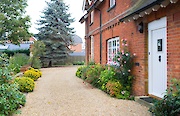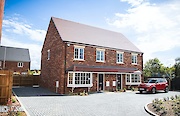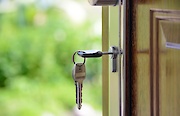


Mortgage Advisor & Director

Mortgage Advisor & Director

Many people dream of owning their idyllic cottage hideaway in the English countryside, but don’t realise that it can be more challenging to find a mortgage lender for this property type compared to conventional brick and mortar houses.
Here we look at lending criteria for cottages, how lenders balance their risk in this type of lending, and how to find the best deal on a cottage mortgage.
Is it harder to get a mortgage on a cottage?
It can be slightly more challenging to get a mortgage on a cottage, depending on the type of cottage in question. Most people think of a chocolate box thatched roof property when they hear the term ‘cottage’, but in reality, many thatched roofs have since been replaced.
Other factors that may impact mortgageability when buying a cottage could be:
- State of repair: Cottages tend to be older buildings so may be structurally unsound
- Location: Remote property can be harder to resell, which will be a factor lenders consider, but equally if you’re buying in an outlying island or known conservation area, not all lenders are able to help
- Listed status: This won’t only apply to cottages, but due to their age, many cottages have listed status. Not all lenders will finance listed buildings due to the additional liability of hard to source and usually high cost traditional maintenance
Can you get a mortgage on a thatched cottage?
Most lenders will consider thatched properties that are in tip-top condition, however, the need to maintain this type of property could still impact the LTV of your mortgage agreement, given the high upkeep costs of these buildings.
It’s common for the maximum LTV lenders offer for a thatched cottage to be lower than other homes. In some cases you may be able to minimise some of the lender's perceived risk, for example, by committing to add a fire-resistant membrane to the thatched roof.
What about if it is a listed building?
If a property is both thatched and listed, it can be slightly more difficult, due to the added implications of:
- Restrictive covenants requiring specialist tradespeople and limiting renovations
- Potentially faster decline in value due to advanced degrading of property with age
- The specific grade - grade I listed buildings are harder to finance than grade 2* and grade 2
However, there are specialist lenders, and brokers like us, who can help in most cases, so long as you approach the most appropriate for the property type.
Lending criteria
As well as affordability criteria, lenders tend to have additional property specific criteria to be met when the application is on a non-standard construction property, such as a cottage.
Some additional concerns they may have are:
- Listed building status
- Overall state of repair of the property - including insulation and whether it’s been modernised (waterproof, rewiring etc)
- Roof type, state of repair and maintenance requirements
- Insurability and remortgagability
- Location - Is it in a high risk location such as a flood zone, near a railway line or on an island
- LTV - The loan to value will likely be lower than on a standard modern home, but how much it’s reduced will depend on the cottage type and state of repair. The majority of non-standard construction properties have a maximum LTV of 75%, although this could be lower on very high risk cottages
- Property usage - Cottages are commonly used as holiday locations, so lenders will consider whether you’re buying as a second home, holiday let or standard residential home
How to get a mortgage on a cottage
To secure a mortgage on a cottage you’ll need to find the right lender for the type of cottage you plan to buy and its intended use. If you’re buying it as your main home there are likely to be more lenders willing to look at your application, although you’ll still need to meet their property specific criteria, so whether they accept thatched roofs if relevant, etc.
If you’re looking to purchase this as a second home it shouldn’t be much more difficult, but you’ll need to meet the affordability criteria for both properties, especially if you still have a mortgage on your first home.
A holiday let can be slightly harder to obtain, as the commercial element adds another level of risk. Not all lenders offer holiday let mortgages, and once you add the additional criteria attached to cottages, the pool of lenders will reduce further, however, it’s perfectly possible to obtain a mortgage with the right lender.
As every lender differs slightly in what they deem an acceptable level of risk for a cottage, it’s important to speak to a specialist with experience of securing finance for cottages in the UK. At Teito, we can help you, no matter what type of mortgage or cottage you want.

Get tailored advice on cottage mortgages
How much can you borrow?
As mentioned, your LTV is likely to be impacted, meaning you’ll likely need a higher deposit and not be able to borrow quite as much when you buy a cottage. Depending on the property type and the type of mortgage you need, expect to provide a deposit of 25-50%.
Most lenders will then multiply your annual income by 4.5 to work out your maximum borrowing, but some will use a higher salary multiple of 5 times income or more.
Use our calculator below to get an idea of your maximum borrowing:
Getting a mortgage to buy holiday cottage
If you’re looking to buy a holiday cottage, the type of use will determine which type of mortgage you need.
If you’re buying a holiday cottage purely for your family to use as a countryside getaway, you’ll need a second home mortgage. Keep in mind that you will be liable for additional stamp duty when you own a second home.
It’s also common, and often more economical to purchase a holiday cottage as a holiday let. In this case you’ll need a specific holiday let mortgage. This allows you to let out your cottage for short term stays when you’re not using it for your own holidays. Usually there will be a limit on how many days per year you can offer it for rent and the maximum tenancy length will be 31 days.
With a holiday let your loan will be based on rental yield, much like a buy-to-let mortgage, however, it’s a more nuanced calculation, as lenders will look at low, mid and high season letting prices and demand, which can vary dramatically.
Why choose Teito for your cottage mortgage?
No matter what type of cottage you plan to buy, and how you intend to use it, our experienced brokers at Teito can help you to secure the finance you need.
We know which lenders are willing to accept which types of property on each type of mortgage, and can make recommendations that will make your journey a simpler and more successful one.
Our initial consultation is free, with no obligation. Our service is rated 5-stars across many review platforms, and we’re experienced in obtaining finance for all types of non-standard construction property. Get started here to speak to our friendly team today.
FAQs
Cob is a building technique that uses a mixture of subsoil, water, and organic materials such as straw, occasionally with lime, to construct walls and other parts of a building’s structure.
This type of construction is classified as ‘non-standard’, and if you are buying a cottage that features it, getting a mortgage can prove more difficult and lenders tend to base their approval decision on comments from the valuer about the construction quality.
In summary, it is possible to get a mortgage on a cob cottage, but you may need to use a lender who specialises in non-standard construction properties.
Choosing an Adviser
Selecting a qualified and experienced mortgage adviser is of great importance. To choose a suitable adviser, evaluate their qualifications, experience, and reputation, and ensure they are regulated by the Financial Conduct Authority (FCA).
Read reviews from previous clients and make sure they provide a clear explanation of the products and services they offer, as well as the fees and charges associated with them.





















































































































































